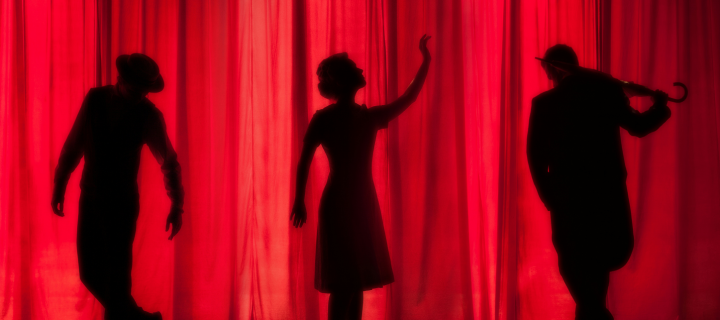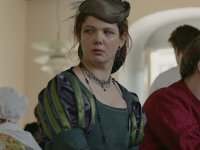In September 2022, I began a new job as the middle school drama teacher at a school in upper Manhattan, New York City. In the months before, I had been picturing a dream job in which I was teaching both theatre and larp. When I accepted this position I imagined that after a year or two, I could create an after-school larp club.
To my surprise, during orientation, my principal, Rinaldo Lumumba Murray, told me that he had complete trust in me as an artist. He said I was free to design my curriculum however I saw fit. What a gift that turned out to be!
New Heights Academy Charter School has about 100 students per grade, split into four sections. I taught ages eleven to fourteen, and had a different section of children each quarter. This meant I had opportunities to start fresh, adjust my curriculum, and ultimately, experiment with utilizing larp.
The first larp emerged as a result of unexpected behavior from one of my 7th grade students (age thirteen), whom I’ll call J. He walked into class with a sweatshirt stuffed in his shirt, making him appear pregnant. He walked slowly holding his big belly, modeling the exact gait and posture of someone close to giving birth. I complimented his physical acting and asked how he was able to portray that so realistically.
“Is someone in your family pregnant?” I questioned. “No”, he said simply, and gave no further explanation.
The next day, he did the same thing with his sweatshirt as he entered. “So when is the baby due?” I asked.
“Soon”, J said, and I commented in front of the class that someone should really be helping carry J’s heavy backpack.
This continued (but never disrupted class), and by the fourth day I laughed and said, “I think we need to throw you a baby shower or something!”
A lightbulb went off in my head. I hadn’t yet assigned this class’s final project, and realized J had inadvertently created the perfect inspiration for a larp.
The larp lasted one period, and followed the format of a baby shower. Students could choose to play J’s family, friends, or co-workers. As their final project grade, everyone had to participate in the larp. However, there were a number of ways to achieve this. The goal was that the students would be in character throughout the class and interact with others. For my introverted students, I also offered credit for creating costumes, making a gift for J, bringing snacks/supplies, being the DJ or creating a song list, serving snacks during the party (in character) etc. There were hilarious speeches, different kinds of snacks, and dancing.
The Baby Shower was a huge success, and the halls were abuzz in the days that followed with talk of the party. Over the course of the year, I created two more larps with other classes. One was a birthday party for a 47 year old man named Theodore who had moved to Europe, and the other was called Leprechaun Academy, about a group of preteen Leprechauns who went to the same school.
All of these larps were born out of my focus on emergence. This is a tenet of devised theatre, which I was exposed to during my time in a conservatory theatre university program at The University of the Arts in Philadelphia. The Oxford dictionary defines emergence as “the process of coming into existence or prominence”.
I will next explain some of my methods used to create these larps.
There are many benefits to using the setting of a party for larps. Kids know how to act at a party and alibi is already present, since the guests are there for a reason. Relationship ties are already partly established, meaning that my students knew exactly how a grandmother would greet her grandson when she walked through the door. Two boys instinctively knew that if they played cousins who were the same age, they could get into trouble during the family function, until they were caught by the girl who played their Tia (Aunt in Spanish). Another benefit to this setting is that school higher-ups are familiar with classroom parties. My principal and deans knew they could expect to hear some music and extra noise coming from my room, just for that one period.
Over the course of the year, I found a method that allowed students to quickly co-create the details of the larp in a fun way. In the U.S., lessons often begin with a “Do-Now”, a quick, five-minute activity to get students sitting, quiet, and focused. I always assign my Do-Nows on Google Classroom. Students respond to prompts on their laptops, and once they click submit, I can show all of their answers in a list on the Smartboard in my room. For those without Google Classroom, this can be accomplished using other programs, such as Google Sheets.
For my second larp, I had my students brainstorm the details of a birthday party we were going to throw in class on Google Classroom. Students came up with who the birthday child was, where the party was taking place, who the guests were, and many more details. It is very fun to read the different answers aloud, and I would choose my top three favorites. The class would vote, and voila! We had designed all of the details around the larp setting. We even co-created plot points that would occur during the party.
Creating larps specifically for certain classes was highly enjoyable for me, and I loved the challenge of finding inspiration from the students themselves. Children are full of idiosyncrasies and love to make jokes. In the case of the baby shower, I would consider J’s behavior a bit, which is a repeated joke. Rather than shutting him down, I deemed this silly “bit” the seed of something special, and J became the center of the larp. I am guessing that him acting pregnant was attention-seeking behavior. It was very special to funnel that into something creative, and he got a chance to be the center of a larp. More than that, he experienced having a baby shower thrown for him, which he described as a once in a lifetime experience.
I found that I was able to bring role-playing into classes, even when we did not co-create a full larp. My most successful and well-received activity was called “The Drama Club Podcast”. We recreated the recording of a podcast in class, where I played a host who would invite students up to play guests. The secret benefit to this setting is that it requires everyone in the “audience” to be quiet, since we were “recording”. This detail is crucial with classes that fall on the chatty end of the spectrum. We didn’t actually record a podcast, though due to the hilarity that would often ensue, I began to record videos on my phone. I said we were “creating behind-the-scenes content for the podcast’s Youtube channel”.
This is a very scalable activity, because students can play characters close to themselves or not, they can impersonate celebrities etc. The topics discussed and characters can also be connected to content being covered in class. The podcast can run for a few minutes or a whole period. I found that the possibilities are endless! Even more reserved students could participate as callers from the audience, who would pretend to phone in and ask questions of the interviewees. I also enlisted volunteers to come up with Tweets that our “listeners” were tweeting in response to our episode.
I realized that my discoveries from this past year could be helpful in the overall mission of bringing larp into classrooms in America. While there are numerous individuals and organizations achieving this in Scandinavia, it is much less common in the U.S., especially at this age level. Some schools offer Drama/theatre classes where larp could be utilized, but not all.
An obstacle to bringing larp into the general classroom is that core subject teachers have so much material to cover, and must prepare students for state exams and standardized testing. However, I found that by using only five minutes or so at the beginning of class over a few days to flesh out their characters, students were able to successfully larp, with no workshop other than practicing safety mechanics. Even my eleven year-olds, who had never taken drama before, successfully larped from the beginning.
My next steps will be to continue to iterate using these methods to create not only larps, but edularp with specific learning outcomes in mind (cf. Westborg 2023). In the coming year, I hope to use my methods of co-creation with my students to create larps that directly correlate with what they are learning in other subjects, with specific learning outcomes. I hope to collaborate with my students’ other teachers, and I look forward to seeing what we will discover.
If you enjoyed what you’ve read so far, you can head to Nordiclarp.org and search my name or “Adding Larp to a Drama Teacher’s Curriculum – Year 1”. There you can watch the talk I gave at the Knudepunkt 2023 conference on this exact subject! You will find many more details on the topics covered here, as well as a live demonstration of my Drama Club Podcast Activity.
References
Josefin Westborg (2023): The Educational Role-Playing Game Design Matrix: Mapping Design Components onto Types of Education. In International Journal of Role-Playing, no. 13, 2023, pp. 18–30, https://doi.org/10.33063/ijrp.vi13.306.
This article has been reprinted with permission from the Solmukohta 2024 book. Please cite as:
Wolgel, Lindsay. 2024. “Innovations in the Drama Classroom with Larp.” In Liminal Encounters: Evolving Discourse in Nordic and Nordic Inspired Larp, edited by Kaisa Kangas, Jonne Arjoranta, and Ruska Kevätkoski. Helsinki, Finland: Ropecon ry.
Cover photo: Photo by Kyle Head on Unsplash.






